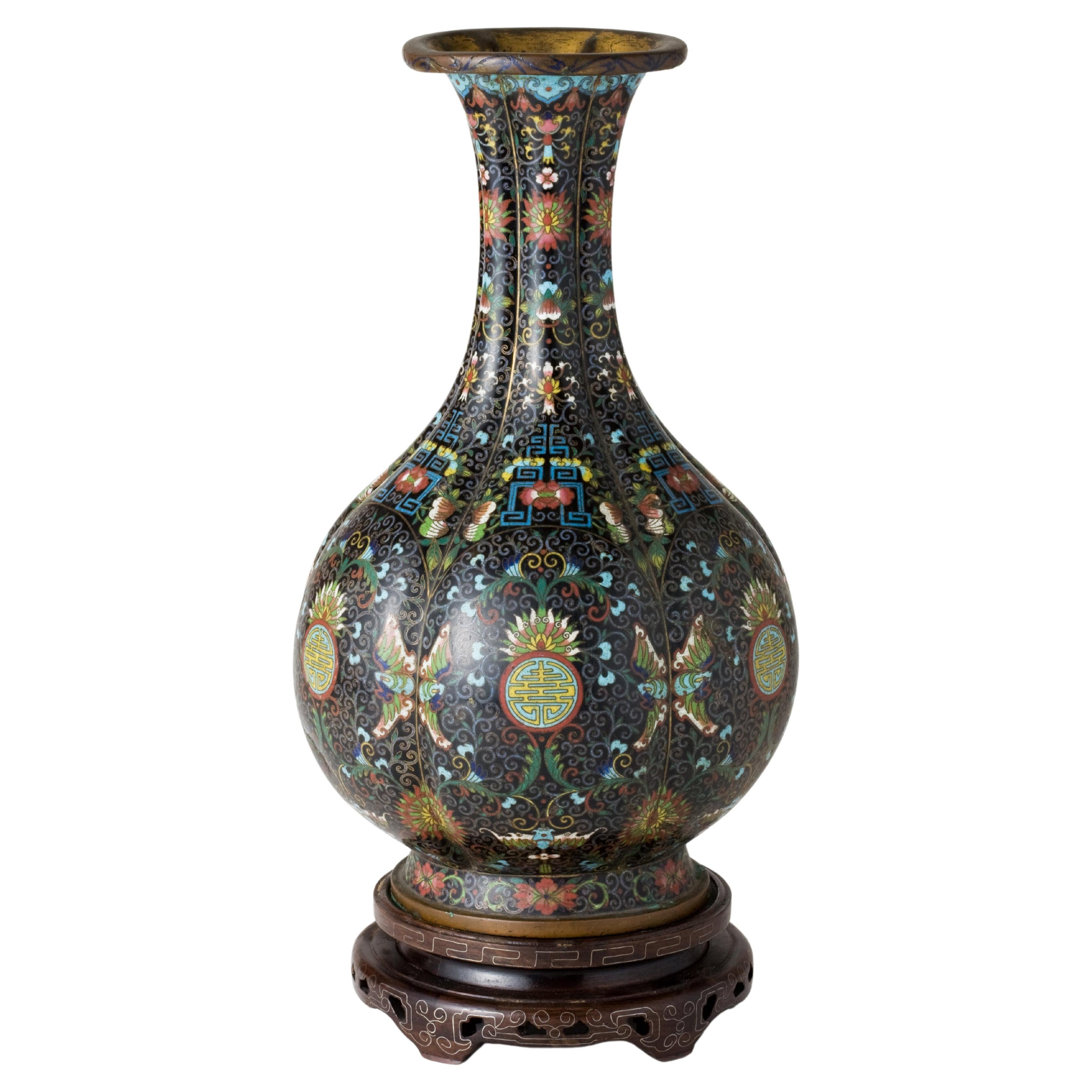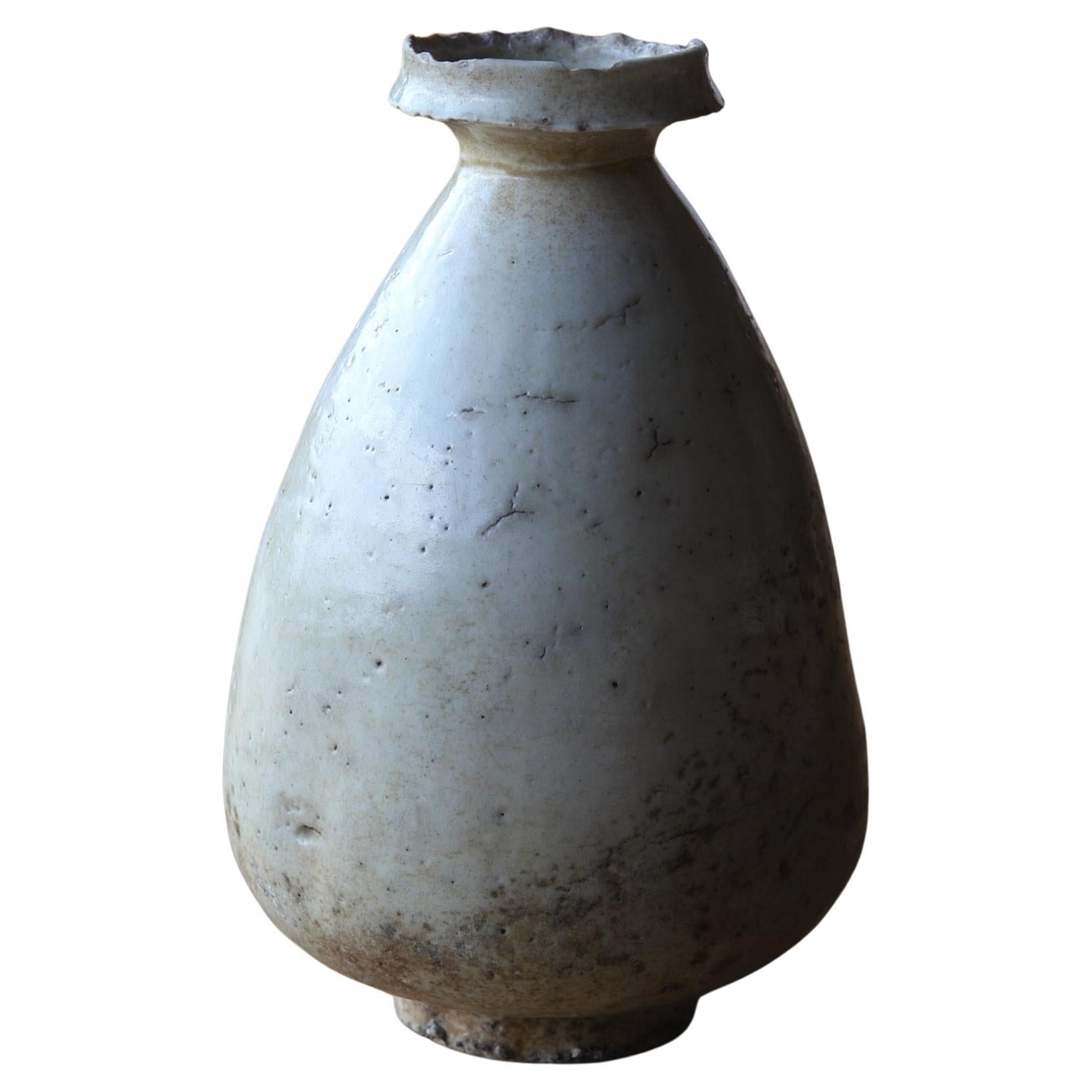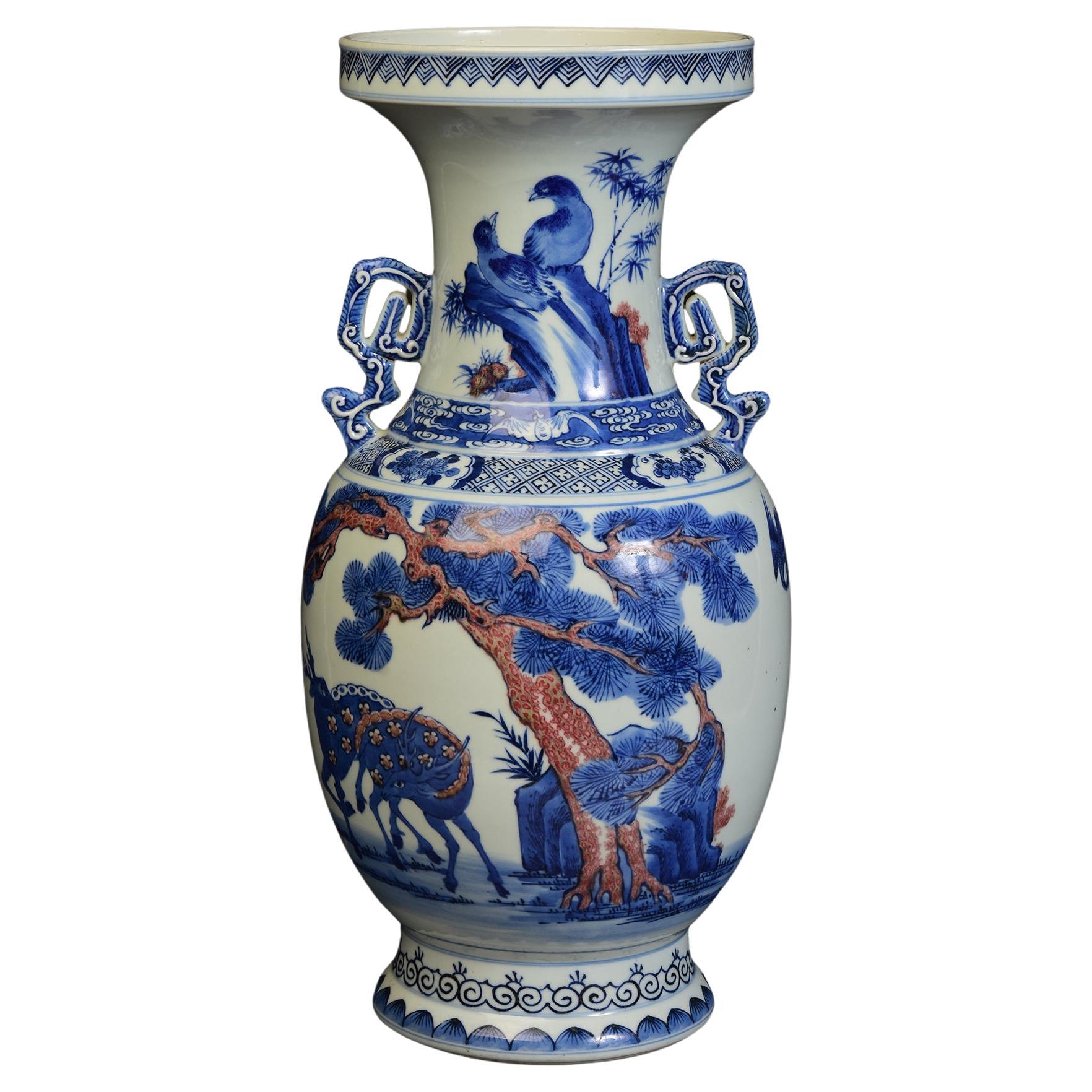Items Similar to A Wucai 'Peony' Vase Transitional Period, 17th century, Early Qing Dynasty
Want more images or videos?
Request additional images or videos from the seller
1 of 11
A Wucai 'Peony' Vase Transitional Period, 17th century, Early Qing Dynasty
About the Item
The jar features a balanced and robust form, typical of the Transitional period, which was a time of significant change and innovation in Chinese porcelain art. The decoration is exuberant, with bold red and green colors dominating the palette, accompanied by accents of yellow, blue, and other hues to complete the 'five colors' scheme.
A large peony, which is a frequent motif in Chinese art symbolizing wealth and honor, is prominently displayed in a bright red tone, contrasting with the green foliage. The peony is surrounded by intricate scrollwork and smaller floral motifs, indicative of the sophisticated and detailed painting style of the era.
This jar is a fine example of the artistic capabilities during the Shunzhi period, showcasing the transition from the bold and expressive designs of the late Ming to the more refined tastes that would come to define Qing dynasty porcelain. It reflects both the technical advancements in porcelain production and the rich symbolism prevalent in Chinese art. The Wucai decoration would have required great skill to produce, as the colors needed to be applied and fired at different temperatures to achieve the desired vibrancy and clarity.
Period : Late Ming-Early Qing Dynasty
Production Date : 17th century
Size : 28cm (Height), 13.0cm(Diameter)
Condition : Excellent
* Wu Cai
Wucai, which literally means "five colors," is a distinctive style of Chinese porcelain decoration that flourished during the Ming (1368~1644) and Qing (1644-1912) dynasties. The wucai technique involves the use of a palette of typically five overglaze enamel colors – red, green, yellow, blue, and purple – to embellish porcelain wares. The colors are applied to an already glazed and fired piece of porcelain, which is then fired again at a lower temperature to fuse the enamels to the surface.
The wucai style is noted for its vibrant and harmonious blend of colors, which are used to create intricate and lively decorative patterns. These patterns often feature motifs from nature, such as flowers, fruits, animals, and landscapes, as well as scenes from literature and mythology. The style is also characterized by a dynamic sense of movement and an emphasis on artistic expression and detail.
Wucai porcelain was highly valued for its artistic complexity and was used for a wide range of items, from imperial wares intended for the court to pieces produced for domestic use and export. The technical proficiency required for wucai decoration made it a symbol of the potters' craftsmanship and the rich cultural heritage of Chinese ceramics.
- Dimensions:Height: 11.03 in (28 cm)Diameter: 5.12 in (13 cm)
- Style:Qing (Of the Period)
- Materials and Techniques:Ceramic,Glazed
- Place of Origin:
- Period:
- Date of Manufacture:17th century
- Condition:Repaired: Minor Repairs on neck part. Minor fading.
- Seller Location:seoul, KR
- Reference Number:1stDibs: LU9577238182932
About the Seller
New to 1stDibs
Joined in the past six months.
4.5
Vetted Seller
These experienced sellers undergo a comprehensive evaluation by our team of in-house experts.
Established in 1999
1stDibs seller since 2023
Typical response time: 1 hour
- ShippingRetrieving quote...Ships From: seoul, Korea South
- Return PolicyA return for this item may be initiated within 10 days of delivery.
More From This SellerView All
- Chinese Cloisonné Vase, Qing Period, 19th CenturyLocated in seoul, KRCloisonné enamel vase of baluster form and lobed sides decorated with foliage and flowers on a black background, gilt copper neck and base. Around 1900 Period: Qing Dynasty Type: Va...Category
Antique 19th Century Chinese Qing Antiquities
MaterialsEnamel
- Kendi Blue And White, Qing Dynasty, Kangxi Period, C 1690Located in seoul, KRThe Kendi is decorated with cobalt blue underglaze depicting flowers and a mythical bird, reflecting the artistic finesse and symbolic expressions of the era. These designs often carry symbolic meanings, with birds sometimes representing immortality or spiritual transcendence in Chinese mythology. The Kendi's form, with a bulbous body and spout for drinking, is a traditional vessel style in Asia, valued for both its functionality and aesthetic appeal. Period : Qing Dynasty, Kangxi Period Production Date : 1690-1699 Made in : Jingdezhen Destination : Netherland Found/Acquired : Southeast Asia , South China Sea, Vung Tau ship Reference : Double checked with reference to the original catalogues 1) Christies Amsterdam 1992 - Vung Tau Cargo / Christies 2) Qing Dynasty Export...Category
Antique 1690s Chinese Qing Antiquities
MaterialsCeramic
- Cloisonné Enamel Vase, Early Ming Dynasty(15th century)Located in seoul, KRThis exquisite vase is a fine example of Ming Dynasty cloisonné, an era renowned for revolutionizing the cloisonné technique with intricate design and vibrant enamel work. The cylind...Category
Antique 15th Century and Earlier Chinese Ming Antiquities
MaterialsBronze, Enamel
- Blue And White Vase, Qing Dynasty, Kangxi Era, Circa 1690Located in seoul, KRThe painting features a typical Kangxi blue and white style depiction of a female figure. Period : Qing Dynasty, Kangxi reign Production Date : 1690-1699 Made in : Jingdezhen Destination : Amsterdam Found/Acquired : Southeast Asia , South China Sea, Vung Tau Ship Reference : Double checked with reference to the original catalogues 1) Christies Amsterdam 1992 - Vung Tau Cargo...Category
Antique 1690s Chinese Qing Antiquities
MaterialsCeramic
- A Carved White Ware 'peony' vase, Song-Yuan dynastyLocated in seoul, KRThe vase is raised on a slightly splayed foot and flanked on the tall cylindrical neck by a pair of mask handles. The body is molded with lotus scroll pattern between a floral scroll...Category
Antique 15th Century and Earlier Chinese Chinese Export Antiquities
MaterialsCeramic, Porcelain
- Large Rare 'Riverscapes' Pattern Baluster Vase, Qing Dynasty, Kangxi, circa 1690Located in seoul, KRLarge rare vase painted with petal-shaped panels of riverscapes pattern. Period : Qing Dynasty, Kangxi Period Production Date : 1690-1699 Made in : Jingdezhen Destination : Netherland Found/Acquired : Southeast Asia , South China Sea, Vung Tau...Category
Antique 1690s Chinese Qing Antiquities
MaterialsCeramic
You May Also Like
- 17th Century Qing Dynasty Set of 5 Chinese Bamboo Tea Cups with Silver InlaidLocated in Brea, CAA fine set of 5pieces Chinese bamboo tea cups with silvered interiors from the 17th century Qing Dynasty, the faces each of each decorated t...Category
Antique 17th Century Chinese Qing Lacquer
MaterialsBamboo
- White Porcelain Vase / 17th Century / Korean Antiques / Joseon DynastyLocated in Kyoto-shi, KyotoThis product is a white porcelain bottle from the Joseon Dynasty. People in those days used bottles like this to make soap from waste oil. With use, the porcelain frayed and curle...Category
Antique 17th Century Antiquities
MaterialsCeramic, Porcelain
- Gilt-Bronze Bowl, Qing Dynasty, Qianlong PeriodLocated in Islamabad, PKA gilt-bronze bowl, qing dynasty, qianlong period. The beautiful bowl is showcasing palace courtyard daily life scenes and is heavily adorned all ar...Category
Antique 19th Century Chinese Qing Decorative Bowls
MaterialsBronze
- 19th Century, Qing Dynasty, Antique Chinese Porcelain VaseLocated in Sampantawong, THAntique Chinese porcelain vase. Age: China, Qing Dynasty, 19th Century Size: Height 46.8 C.M. / Width 22 C.M. Condition: Nice glaze an...Category
Antique 19th Century Chinese Antiquities
MaterialsPorcelain
- Qing Dynasty A Antique Chinese Porcelain Gu VaseLocated in Brea, CAQing Dynasty an antique 19th century Chinese porcelain Gu vase decorated with shuangxi, the Measures: 9.25'' diameter x 16'' high.Category
Early 20th Century Chinese Qing Antiquities
MaterialsPorcelain
- 17th Century Ming Dynasty Carved Stone Barrel #01Located in Chicago, IL17th Century Ming Dynasty carved marble garden seat with Foo Dog handles, floral reliefs and bat wing decoration. The Chinese symbol for bat and fo...Category
Antique 17th Century Chinese Ming Antiquities
MaterialsMarble
Recently Viewed
View AllMore Ways To Browse
Early Qing Dynasty Porcelain Jars
Yue Celadon
Large Wall Pieces
Chests For The Living Room
Vintage 90
Midcentury Modern Ceramic Table Lamp
Entry Surround
Glass Floor Lamp Italian Glass
1950s Side Table Table
Antique Pendant Antique Pendant Light
Up Up Coffee Table
New England Style Furniture
Couches Mid Century Designer
Liberty A
Table Top Cases
Branching Lighting
Similar Items
Finnish Design Chair





